I’m sorry, but you need property to be rich

This content is general in nature and not financial advice. Any financial insights provided are general and do not consider your personal circumstances. Please review our Terms and Conditions before relying on any information.
In a recent wire on identifying growth suburbs, we received plenty of feedback suggesting that residential property is a sub-par investment. Some readers - one adviser in particular - argued high costs of ownership, low yields, and lack of liquidity make real estate difficult to justify.
That’s interesting. In my circles of friends, family, and connections at my local Financial Independence, Retire Early (FIRE) group, no one built significant wealth purely through stocks and ETFs.
I’m not saying it never happens, but it seems uncommon. The vast majority of Australians who have achieved millionaire, multi-millionaire and billionaire status, particularly by their 30s and 40s, did so through one of two avenues:
- Owning a successful business.
- Building a substantial real estate portfolio.
The graph below from the AFR, showing the sectors where wealth among the nation's rich is concentrated, reinforces this view.
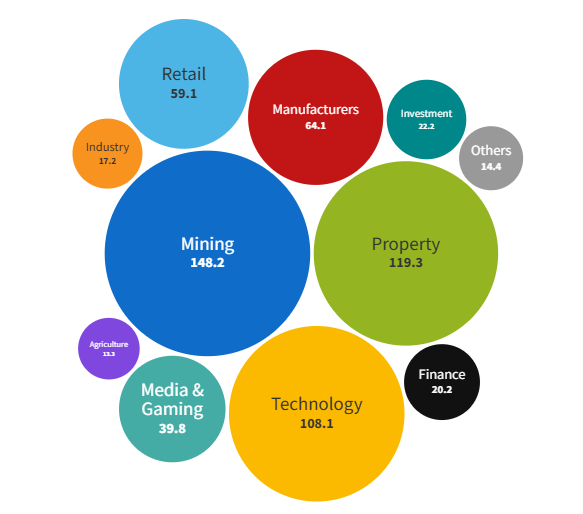
In this wire, I’ll challenge our audience to consider the full spectrum of benefits that investment properties bring to a portfolio by sharing some of my own perspectives on the key criticisms made.
I’ve also invited Koda Capital’s Sebastian Ferrando—who strongly advocates for investing in U.S. shares over Australian property as the superior path to wealth—to offer his counterpoint. That way, you can weigh both sides of this age-old debate and decide for yourself.
Full transparency
For full transparency, here’s my asset allocation: 75% property, 15% equity ETFs and active funds, and 10% cash, bonds and bullion, a balance I’m more than comfortable with.
Like many of you, I have strong convictions about what makes a solid portfolio. Some investors swear by shares. Others only property. For me, it’s a diversified approach anchored by property.
Don't be intimidated by the cost of property ownership
One of the most common criticisms from readers is the cost of buying and holding property—stamp duty, agent fees, council rates, taxes, interest on debt, and ongoing maintenance. Then, of course, the fees paid upon sale.
I won’t deny these costs exist. But as the saying goes: “You have to spend money to make money.”
Many of us willingly pay upfront costs—whether for tertiary education or to put our children through school—expecting the long-term benefits to outweigh the initial expense. Likewise, some of the world’s wealthiest investors didn’t get there without significant upfront investment.
Consider how capital-intensive it was for Meriton founder and billionaire Harry Triguboff to build a property empire or how much Elon Musk poured into Tesla before becoming the world’s richest person. Both understood that capital and leverage are essential to building serious wealth.
Yet, many investors fixate on the short-term costs of property while overlooking its enormous long-term rewards. As values appreciate, rents rise, and mortgages get paid down, those early expenses fade into the background much like the echoes of an economic crisis eventually become just a blip on a stock market index.
Example: My dad’s first property
Take my own family’s experience. My dad bought a property in Whalan, NSW, in 1997—just two years after we immigrated to Australia. The purchase price was $80,000. Today, it’s worth close to $1 million, with a market rent of around $28,000 per year (though we charge less because we have great tenants). That’s a net yield-on-cost exceeding 20%, with a flawless streak of uninterrupted weekly income.
Over nearly 30 years, we’ve put only ~$30,000 into improvements—installing an air conditioner, upgrading the bathroom, adding a new water tank, and replacing carpets.
As my dad likes to remind me:
“Son, I only paid $16,000 for that property and the tenant paid off the mortgage. What work did I have to do?”

Property is a long-term game, and it gets easier over time. Critics often highlight stamp duty and maintenance costs but overlook the fact that:
- Stamp duty and capital improvements are added to the cost base, reducing capital gains tax upon sale.
- Holding costs, including interest, strata, council, insurance, etc., are all expenses you can deduct.
Looking back, do those upfront costs and holding costs really matter when the end result is a massive, golden cash cow?
To be sure, you can control costs, to an extent
And let’s not forget—there are ways to keep costs down. I manage my family’s property portfolio, handle tenant relationships, monitor rent payments, and do many of my own repairs to avoid management and contractor fees. Once you get used to it, it barely takes any time, especially when you trust your tenants.
I also don’t pay for software to track rental income. Instead, I use a systemised process on Excel, where all my incomings and outgoings are calculated on simple spreadsheets. This allows me to know exactly what I made for each property on June 30 every year, saving thousands in agent fees annually.
In two of my property deals, no real estate agent was involved because the buying and selling parties knew each other. All we needed was a conveyancer for the legal paperwork, which saved us tens of thousands in fees—savings that we split between us.
The key point is that, yes, property has costs—but many of these costs diminish over time, are offset by tax breaks, and can be further reduced by putting in the work.
Sub-par returns are a reality for any asset class
Another key criticism raised is that property is a sub-par investment compared to shares, particularly in terms of returns and liquidity. Sebastian highlights these points in his excellent series, which I reference below.
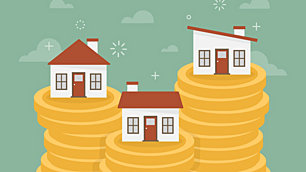
On returns, he notes that U.S. shares have delivered ~12% per year over the long term, while national house prices have grown at an average of 5% per year. Fair enough.
Every week, I see new discussions on Reddit where investors with advanced degrees break down the returns of property versus shares. They assume property is bought with leverage and paid down, while shares are built up from nothing with regular contributions.
Let's work with those numbers and behaviours as inputs and try to crunch the numbers on what works out better if you had $200,000 in spare change.
A quick calculation using ASIC’s compound interest calculator shows that:
- A $200,000 investment in the share market, with $1,000 in monthly contributions over 20 years, grows to $2.79 million, assuming a 12% annual total return before fees.
- A $200,000 deposit on a $1 million property grows to $2.65 million, assuming 5% annual capital growth. I have generously assumed the property is neutrally-geared over this timeframe as interest losses and surplus rents balance each other out, and that the investor still has debt left. So, let's assume the net equity is even lower.
Clearly, shares appear to have the better outcome, right? I don’t dispute the numbers above or those in Sebastian’s wires, and I don't dispute shares would look even better if we were to add a modest amount of leverage into the mix.
But there’s just one major problem: we don’t live in a perfect world where these numbers dictate the return patterns of all property and stock investments. If they did, my entire generation would have started investing in the S&P 500 after the financial crisis, and we’d all be retiring at 40 with a said $2.79 million balance.
The reality is:
- Not every property will give you a measly 5%.
- Not every stock or ETF will return a wonderful 12%.
- Not every investor is disciplined enough to stay the course.
The HARSH TRUTH of investor behaviour
For better or worse, investors are fickle and emotional. And quite frankly, some people just aren’t interested in markets. That’s why the idea that anyone can religiously invest $1,000 per month into an S&P 500 ETF for 10, 20, or 30 years without panic-selling, hoarding cash, chasing fads, triggering margin calls or getting bored is pure fantasy.
Even Warren Buffett doesn’t blindly dollar-cost average into stocks. He waits for "wonderful companies at fair prices," which is why Berkshire Hathaway currently sits on a US$325 billion cash pile.
And it's exactly why charts like the one below exist to illustrate the impact of trying to be a market oracle. If you missed the 20 best trading days over the past five years, your annual return would have been just 2.09% instead of 8.51%—and that’s just using the ASX as an example. Suddenly, property at 5% looks better if you're bad at timing the market!
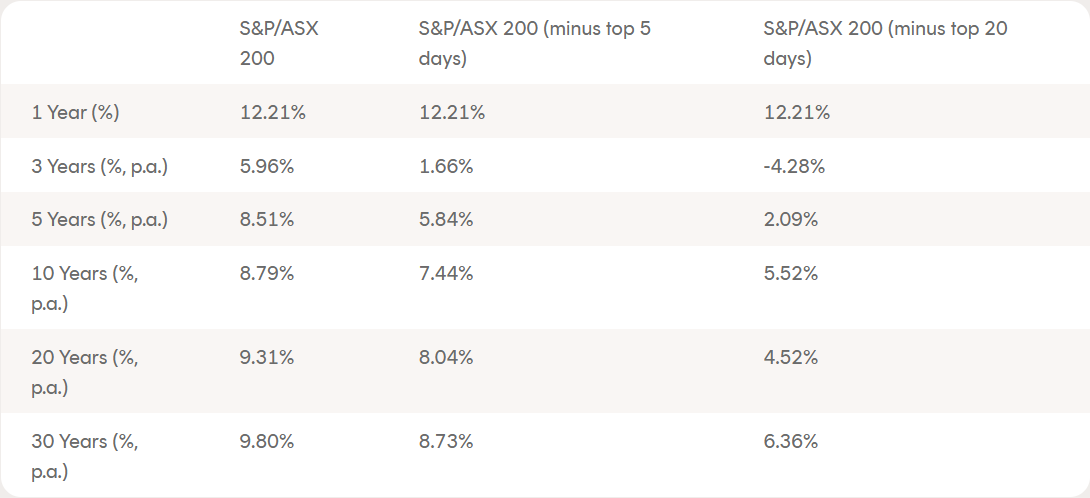
So, while I agree with the numbers favouring shares in theory, I disagree with how they translate into reality. In contrast:
- Property, by its nature, forces discipline.
- Each loan repayment increases your equity.
- There’s no option to panic-sell at the click of a button.
- The bank wields power over you until the loan is repaid, preventing impulsive decisions.
- Selling stocks or ETFs, for better or worse, is just a click away.
In a way, property's illiquidity protects investors from their worst enemy: themselves.
Aren’t property yields low?
The final major point worth addressing is yield. Sebastian and several readers pointed out that property yields are low, a point I disagree with over a long cycle.
In my recent wire, Sebastian commented to another reader: “For income, you're likely better off in Australian shares, but those don’t grow.”
Here are my concerns with this position:
- Australian share market yields have fallen to ~3.5% before franking and are volatile. U.S. yields are stingy at ~1.2%, but do grow decently.
- Australian companies are notorious for cutting dividends at the first sign of a crisis. Remember the savage dividend reductions by the major banks ex-CBA during COVID?
- Australian companies and ETFs don’t pay predictable income, nor do they pay as often as most people would like or need.
In the real world, your daily grocery bills, monthly electricity debits and emergency expenses don’t wait until your variable dividend payments from BHP, Telstra, or a passive ASX 200 ETF hit your bank account 2-4 times per year. You need constant income hitting your bank account, particularly in retirement.
On this basis, I think it's hard to argue that property isn't the ultimate inflation-proof cash-generation machine.
- Property is the only asset class capable of paying you on a weekly or fortnightly basis, the frequency I enforce across my rentals.
- Rents may be low now, but they do grow over time. They simply have to due to the forces of inflation and population growth (see graph below).
- Some of the biggest ASX income-payers like NAB, ANZ, Westpac and Telstra paid dividends that were lower in 2024 compared to 2014. Have you heard of a landlord charging rents like it's the 2010s?
- Unlike stocks or savings accounts, tenants can’t wake up in the morning and announce that they’re slashing their own rent payments due to “changes in market conditions” or a cut in RBA interest rates. Landlords have immense protections, including via insurance, tribunals and rental deposits.
- Tenants will go to great lengths to stay even when rents rise. When you provide a great place to live and they love the area, they don’t want to leave.
- Rents seldom go down, with the exception being rare property glut cycles.
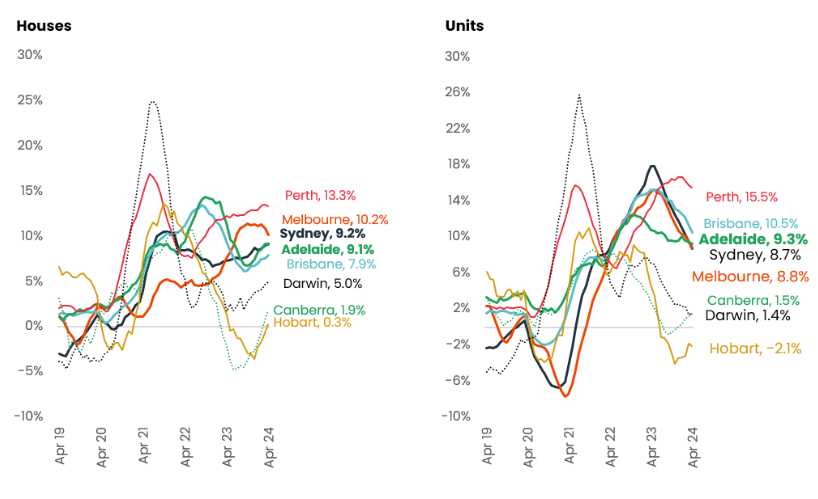
Final words
I’m not saying everyone should go all-in on property, but balance matters. I also invest in ETFs because leverage has its limits. But if you’re serious about building wealth, real estate should be part of the equation, at least based on my own experience.
Property offers control, large-scale leverage without the risk of margin calls, and reliable weekly cash flow. Plus, it allows for "active value-add" through renovations and the ability to draw down equity via a line of credit, providing a form of liquidity (topics we can dive into another day).
You don’t have to love dealing with tenants (I do), but you can’t ignore how many people have built lasting wealth through property.
With that, I’d love to hear our audience’s thoughts and criticisms, and I’m sure Sebastian will have many when he responds to this wire in the coming days. Meanwhile, don't forget to catch up on our recent property articles!
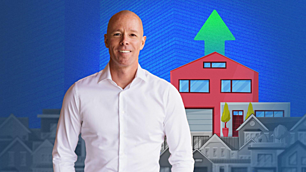.jpg)

2 topics
1 contributor mentioned

